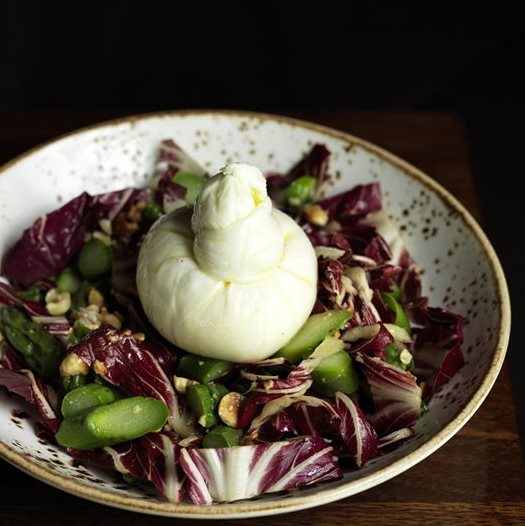These creamy balls of goodness are popping up on menus all over the country, and for good reason.
What is it?
Burrata (meaning 'buttered' in Italian) is a creamy, fresh cheese made from mozzarella and cream. Each ball is made by hand from stretched mozzarella, formed into a pouch and filled with 'stracciatella' – soft, short, thin strings of mozzarella and cream. It’s then pinched at the top to close the pouch. The result is a delicious cheese that once cut open oozes a wonderful creamy filling.
What’s the appeal?
Originally from Puglia in southern Italy, burrata had a practical beginning; it was invented as a way of using up left over curds. The cheese has come a long way, now gaining attention globally and popping up on menus in America, London and beyond – and of course here in Australia too.
Flavour matches?
Burrata is delicious alone but it also pairs well with many flavour profiles. It's a fabulously creamy cheese that melts in your mouth, and is much more delicate than mozzarella. To experience the flavour you need nothing other than some crunchy bread, a drizzle of extra virgin olive oil and a sprinkle of salt and pepper.
Having said that, the flavour and texture also make it a perfect match for:
- Fresh tomato and basil salad
- San Daniele Proscuitto
- Roast vegetables
- Tomato, eggplant and basil pasta
Storage and shelf life?
Keep it in the fridge, whole, and preferably in the watery whey it arrived in. Burrata is best served at room temperature and consumed within 48 hours of being made – that’s when it’s in peak condition. Traditionally burrata was wrapped in Asphodel leaves as a freshness measure: green leaves indicating the cheese is fresh and dried leaves indicating it’s past its prime.
Before serving, remove the burrata from refrigerator and allow it to warm to room temperature.
What should operators look for when buying?
Freshness! It has a very short self life, so it’s important to get it fresh and from a quality supplier. Burrata should have a uniform thickness and a white shiny exterior, while the inside should have a creamy texture with a buttery, milky and delicate flavour.
Local v imported?
While it’s fantastic to enjoy a product from where it was born, we are a long way from Italy. Locally made products will likely arrive fresher, faster and possibly more competitively priced than their imported counterparts.
Credit: Stefano De Blasi, director, Salt Meats Cheese

